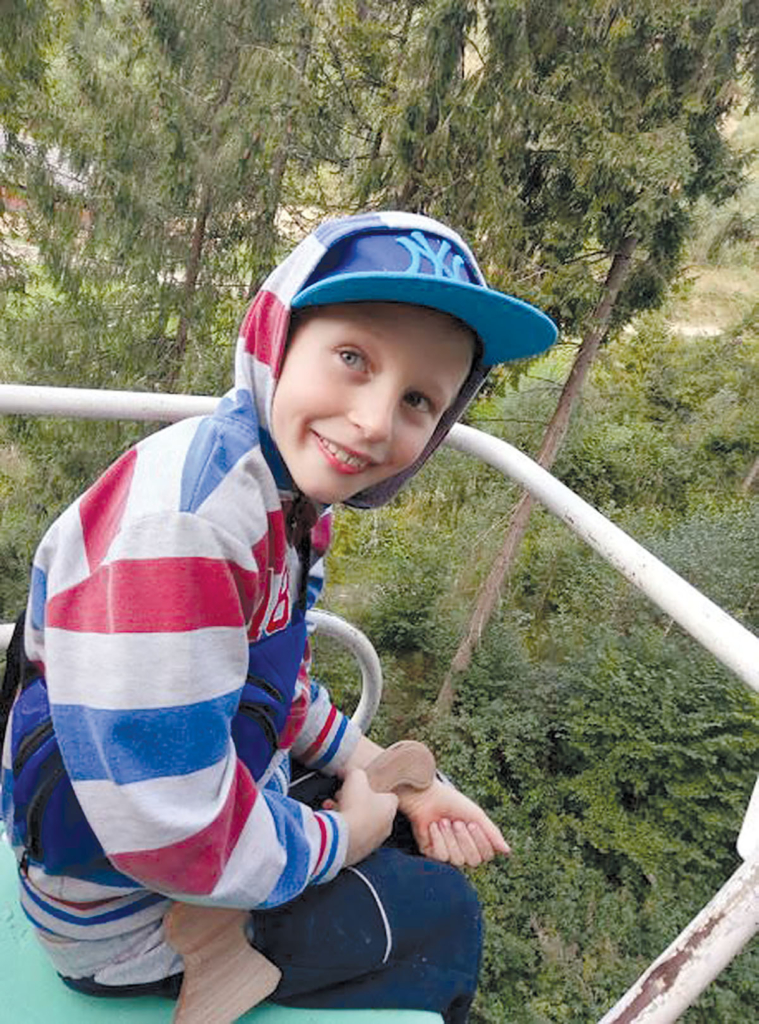There are an estimated 1.38 million people with diabetes in Ukraine according to the International Diabetes Foundation and Diabetes Atlas.
Up to 10 percent of them live with Type 1 diabetes. In this form of the disease, the body doesn’t produce enough insulin, the hormone that regulates blood sugar levels. Therefore, sufferers have to follow a healthy diet, exercise, monitor their blood glucose levels, carry insulin with them and regularly go through medical check-ups.
As World Diabetes Day on Nov. 14 approaches, the Kyiv Post talked to four Ukrainians living with Type 1 diabetes.
Olena Pogorelova,
37, financial analyst, Kharkiv

Olena Pogorelova believes that life with diabetes has an unusual advantage: It has improved her thinking. This is because, she says, she’s “got used to analyzing, searching for causes and effects, and detecting and feeling signs.”
It has also given her a deep understanding of food and nutrition. While for most non-diabetics fruit, salads, bread or wine are simply food and drink, when she sees them her minds fills with thoughts of “healthy fats, protein, and fiber, daily requirements, absorption times and their correlation to the time of day, and graphs and ratios.”
To keep her blood glucose levels stable, she has to ensure she doesn’t consume more sugar than her body can absorb.
Monitoring and managing this level requires her to take blood samples and inject insulin several times a day.
“Injections and pricks with needles are a part of me,” she says.
Roman Vlasenko,
33, political analyst, Kyiv
Roman Vlasenko has lived with type 1 diabetes for 27 years and feels he too has benefited from the self-discipline required to manage his disease. Injections, measurements and dosages aside, he doesn’t think his daily routine is that different to an ordinary person’s. These measures are “like brushing your teeth — they don’t take much time or effort,” he says.
The stress of his work does however sometimes call for extra blood sugar tests.
Moreover, he incorporates exercise into his day, ranging from cycling to simply walking, “to keep the diabetes under control.”
Vlasenko also runs a club for children with diabetes. He’s proof of its message that “diabetes is just a way of life.”
“Does diabetes prevent people from being successful and happy? As far as I’m concerned, it doesn’t”, he says.
Anna Lavrinenko,
16, student, Kyiv

Since Anna Lavrinenko was in preschool, her mother had to come to her daughter’s kindergarten every day, as the staff had no idea how to cater to her specific needs. She would come and do blood glucose tests and administer insulin herself. Anna also had a special meal prepared for her at lunchtime.
Things didn’t get any easier in junior school: Her fellow pupils didn’t understand her illness, and called her a drug addict for taking blood samples and injecting herself. The teasing upset her, Lavrinenko says.
At the same time, her struggles with diabetes provide her extra motivation to succeed, she says.
“I want to be an example for others of how you can live a normal life with diabetes. That’s why I figure skate, dance, sing, and act. I’m fluent in Polish. I’m trying to develop in a number of directions”, she told the Kyiv Post.
And if a diabetes-friendly restaurant ever opens in Kyiv, it may be Lavrinenko’s.
“I dream of becoming a famous restaurateur and opening a restaurant for people with diabetes,” she says.
Andriy Shalaev,
8, student, Lviv

Anatoliy Shalaev, Andriy’s father, told the Kyiv Post that his son’s condition was diagnosed when earlier this year he started to display classic signs of the disease.
“He started to lose weight, tire quickly and drink lots of water”, his father said.
The young boy soon adapted to the strange routine of “blood-sugar sampling, injections in his fingers, and constant introduction of insulin.”
However, the family struggled to establish a suitable diet for their son.
“He wanted to eat all the time and it was hard to regulate the spikes in blood glucose — up, down, up, down,” said Shalaev.
Tools to deal with the disease are expensive and hard to acquire in Ukraine. They started using sensors to monitor blood sugar, but “this product isn’t certified in Ukraine so we had to get them from Italy, and they are not cheap: 60 euros a piece,” Shalaev explained.
They switched to using dipsticks for testing, which proved cheaper.
Now they get them from the government, but still not enough. The family finds the 600 dipsticks provided by the Health Ministry per year are not nearly enough, and “in reality two or three times this amount is required.”
Andriy’s carbohydrate-controlled diet is typical of diabetics, and special precautions have to be taken during the school day. He must always keep a little carton of juice with him in case his blood glucose falls too low, his father said. At a break time, one of his parents checks what he’s eaten, tests his blood glucose and tops up his insulin as required.
On his birthday, Andriy will have to settle for a cake made of fruit, as his body can’t cope with a traditional one.
He’s dreaming of getting an insulin pump, an unusual thing to dream for at his age. One of these would remove the need for constant insulin injections and glucose measurements. Nor would he have to watch his diet so carefully.
However, the cost of the pump, at 2,000 euros, is beyond his parents’ means.
